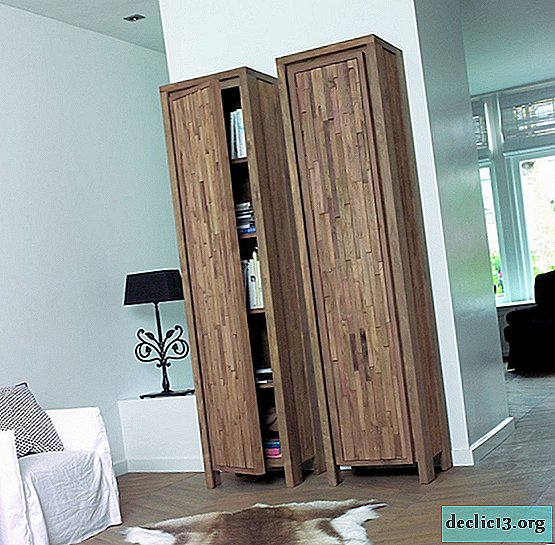Hedgerow as an element of landscape design
Among the elements of landscape design a special place is occupied by hedges. They are representatives of the so-called vertical landscaping. Usually you can see such a detail at the border of the plots. They are designed to harmoniously fit into the general view of the garden, replacing the fence.

A green hedge has many varieties, properties and features, thanks to which it is able to solve a number of practical and decorative tasks. To get a beautiful hedge, you need to find out its features and determine future tasks that are solved by such an element of landscape design.



Hedge classification
There are many varieties of hedges, as well as signs by which one species is separated from another. Recently, evergreen hedges have become popular. Western thuja, spruce, dwarf pine, juniper, which will later become an excellent backdrop for the main flowering and deciduous plants, are best suited for this. Among the useful properties of such a fence:
- sound insulation;
- opacity;
- good appearance;
- compatibility with other plants;
- unpretentiousness in leaving.


Deciduous hedges are an alternative to evergreens. The opacity of such a hedge can be achieved by forming it from thorny shrubs or densely branched plants. Otherwise, the hedge will lose part of its capabilities after the leaves fall from it. The advantage of this hedge is the abundance of species of suitable plants:
- elder;
- acacia;
- willow;
- chokeberry;
- derain;
- snowman and others.



Hedgerow may be molded. Such a fence is suitable for gardens with many flower beds, paths and other elements of landscape design. With the help of molded stands, you can create clear forms on the site and provide a perspective.
For the natural look of the garden, freely growing hedges are more suitable. It is better to use this design solution in large-area gardens. A good choice for this hedge is plants that do not tolerate a haircut.

Such a variety as border hedges are only decorative in nature. Usually it is shrubs reaching a height of up to half a meter and intended for the design of flower beds.


By the method of planting, hedges are divided into single-row, double-row and three-row. For single-row, densely branched shrubs are most often used. They are placed along fences, paths or used to delimit the zones of the plots. Two-row plantings have a dividing and sanitary-hygienic function. They include both plants of the same type and greens of different breeds. Three-row hedges are the most difficult because planting tiers should be maintained. Plants in the first row should be the lowest, and in the last - the highest. It is an ideal barrier to dust and dirt and is used along roads where there is active traffic.



According to their design, the hedges are divided into single-breed and combined. Single breed, regardless of the number of rows will consist of plants of the same species. Combined can include many plants with special attention should be paid to their compatibility.
The trellis variety of hedges is one of the most difficult. At the same time, it will become a picturesque element in a garden or park on a personal plot. They look like single-row plantings, the shoots of which are located in the same plane. For such a fence, only specific plants from a height of one meter are suitable:
- willow;
- Apple tree;
- pear;
- hawthorn.
Another special way to decorate the garden is the alley. It can be distinguished by trees planted on both sides. Usually this distinguishes walkways and even carriageways. Large-breed plants are used for this design.


The specifics of the use of hedges in landscape design
Before deciding on the type of hedge, you need to highlight the main task that this detail of landscape design should solve. Among them may be:
- the design of attractive green walls on the site;
- protection from visiting uninvited guests;
- protection against noise, dust, wind;
- zoning of space;
- disguises of unpresentable architectural structures or farm buildings.

It is better that the plants for the hedge are unpretentious in care. Shrubs should keep their shape well without frequent haircuts and withstand seasonal temperature changes. These plants include:
- barberry;
- hawthorn;
- Karagana
- cotoneaster brilliant;
- spirea and others.

Some plants are undesirable to use. Among them is a varietal lilac, which after several years is exposed in the lower part and loses its charm. Also, do not plant viburnum, as this plant is very favorite among pests, which by the middle of summer will destroy the beauty of this beautiful shrub. Fieldfare, shrimp, wild rose and decorative raspberries tend to grow and occupy large spaces with their roots. They are best used for free-growing hedges and only in those places where they will not interfere with other plants.
Hedgerows took their place in landscape design for a very long time. More than a thousand years ago, in England, the owners fenced their plots with a living wall in order to separate them from neighboring ones. Then the myths said that in the crowns of plants fabulous creatures live, protecting peace in the house. Now green hedges not only maintain peace in the areas, but also create the necessary comfort, cleanliness and a sense of security.

















